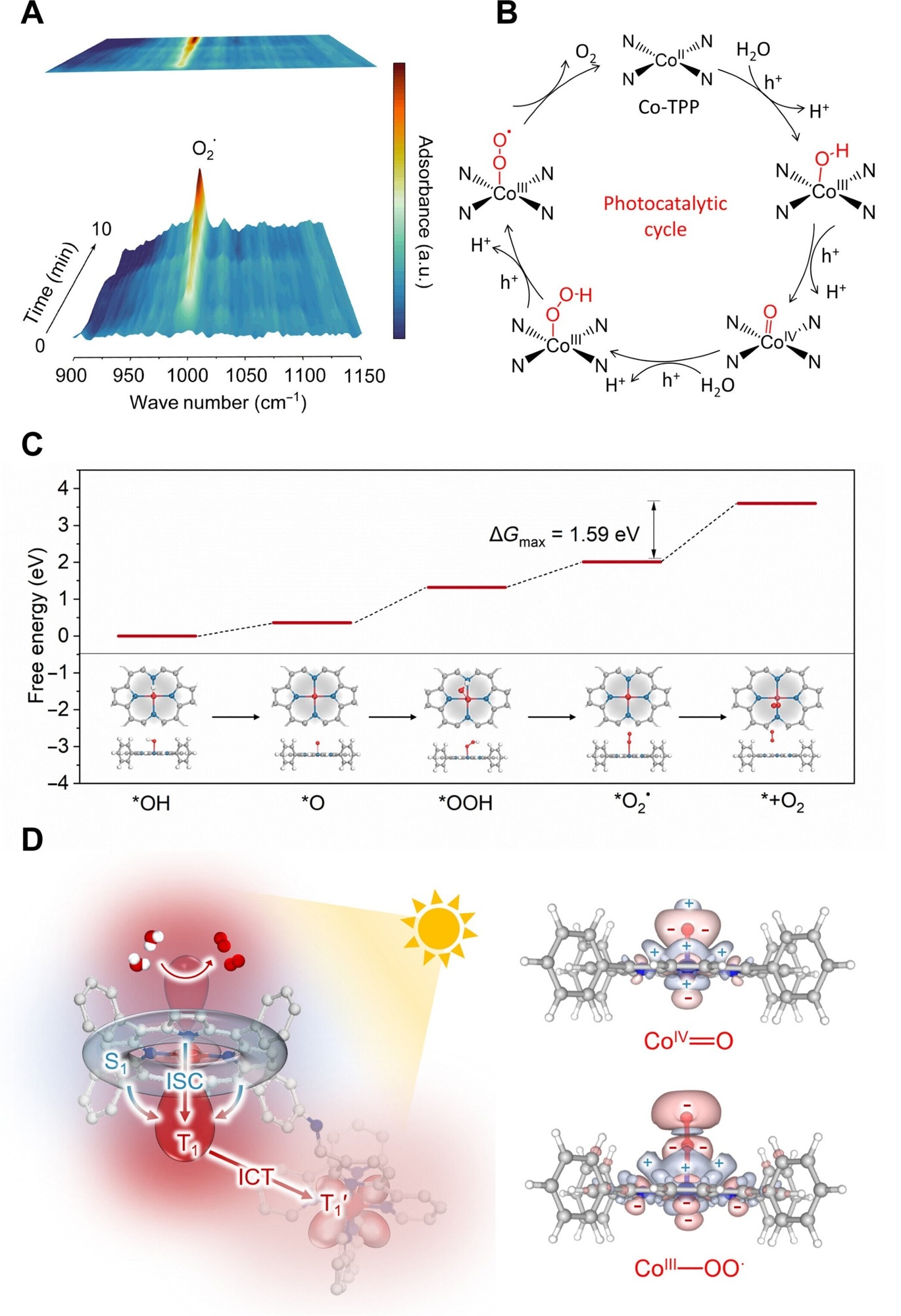The Fujian Institute of Research on the Structure of Matter of the Chinese Academy of Sciences, led by Professor Wang Yaobing, and his team, have published a study in Science Advances that outlines a novel strategy for the rational design of an ionic-type covalent organic framework (CoTPP-CoBpy3) that has atomic ultrathin nanosheet morphology, high water-affinity, effective charge separation, and a kinetic favored water oxidation mechanism.
 In situ ATR-IR characterizations and density functional theory calculations. Image Credit: Science Advances.
In situ ATR-IR characterizations and density functional theory calculations. Image Credit: Science Advances.
By facilitating photocatalytic water splitting and CO2/N2 fixation, the photocatalytic water oxidation process is essential to achieving an effective solar-to-chemical conversion. Nevertheless, research has been hindered by the absence of well-designed photocatalysts to overcome the slow kinetics of water oxidation. Consequently, the development of an effective photocatalyst for water oxidation is crucial.
Most of the reported COF-based photocatalysts are not as effective as the CoTPP-CoBpy3 water oxidation photocatalyst.
The ultrathin nanosheet shape of CoTPP-CoBpy3 in different solvents was shown by the researchers using cryo-TEM (transmission electron microscopy) and atomic force microscopy (AFM). Through the use of density functional theory (DFT) calculations, zeta potential testing, and contact angle measurements (CAs), they were able to demonstrate the superhydrophilicity.
The researchers discovered the relayed electron transfer channel, a prolonged excited state lifetime, and ultrafast intramolecular charge transfer (ICT) between two triplet states based on their examination of the charge separation property using femtosecond transient absorption (fs-TA) spectra.
They showed an end-on type superoxide radical adsorption at the single cobalt active site for the first time by combining DFT calculations with in situ attenuated total reflectance infrared spectrum (in situ ATR-IR) spectroscopy, indicating a kinetically-favored water oxidation pathway.
The relayed electron transport pathway and the intermediate evolutions of catalytic water oxidation are proposed to work in concert by the researchers through an electron-intermediate cascade mechanism. The electron-relayed state of the Co active site may be more advantageous for water oxidation than an excessive hole buildup, as this electron-intermediate cascade process highlights.
This work gives a good example for further research into high-performance water oxidation photocatalysts, as it presents an effective design for the catalyst.
Journal Reference:
Zhou, E., et.al., (2024). Ultrathin covalent organic framework nanosheets for enhanced photocatalytic water oxidation. Science Advances. doi.org/10.1126/sciadv.adk8564.